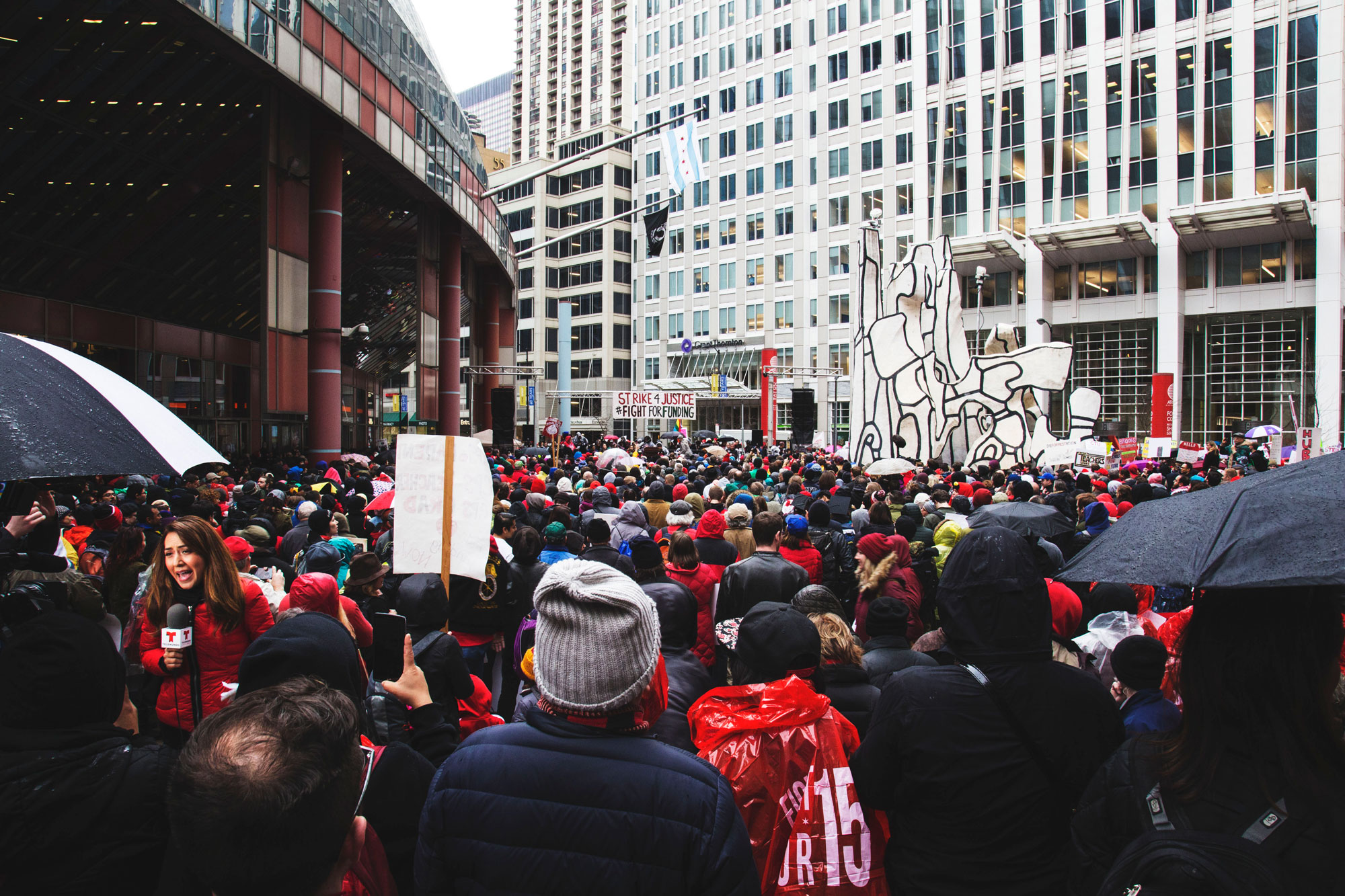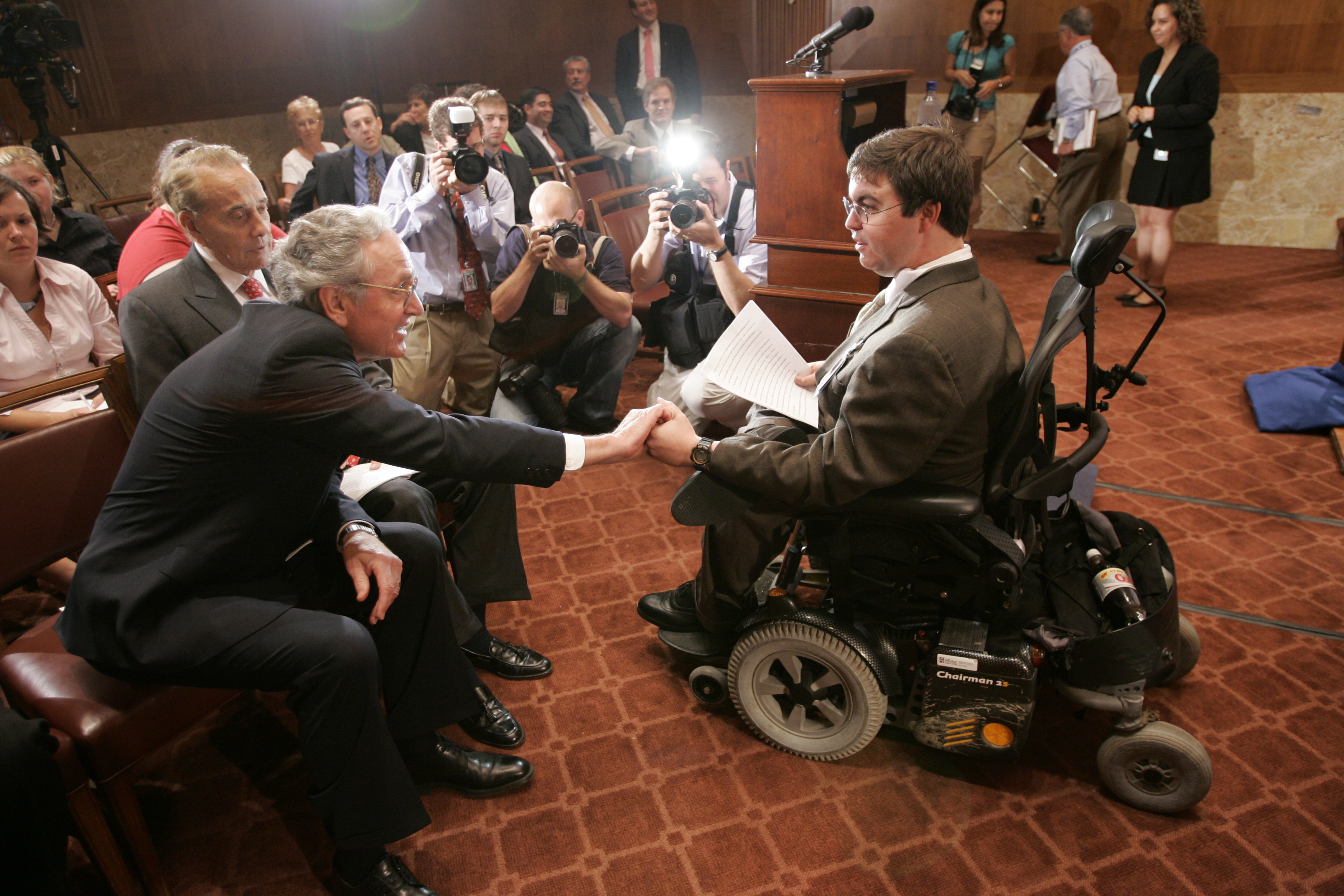In ten events in ten different cities, from February to May, Immigration and Customs Enforcement (ICE) is being put on trial. The Detention Watch Network, a coalition of organizations focused on the injustices of immigration detention, has organized people’s tribunals to hold ICE’s history of abuse and oppression up to public scrutiny.
This past weekend, the “ICE on Trial” tribunals continued near detention centers in Taylor, Texas, and Richmond, California. The events are loosely presented in the form of a trial, with a jury, expert witnesses, evidence and testimonials from victims and their families. The symbolic tribunals questions the very legitimacy of the agency.
Get TalkPoverty In Your Inbox
ICE detains approximately 40,000 people a day in a network of more than 200 facilities throughout the country. Annually, ICE holds about 400,000 people in its facilities. But the numbers don’t tell the story of the misery that the agency inflicts, which involves terrorizing neighborhoods; breaking apart families; separating children from their parents; subjecting asylum seekers to prolonged detention; and sexually, physically, and emotionally abusing those in its custody. As the ACLU put it recently, “ICE cruelty knows no bounds.”
Though ICE has been a scourge on immigrant communities for years, the past year may have been the agency’s most brutal. Bolstered by anti-immigrant rhetoric from the Trump administration and a directive from Attorney General Jeff Sessions to prosecute “all immigration cases,” ICE has dramatically widened its net. It has resumed a Bush-era strategy of terror-inducing raids in neighborhoods and workplaces—and even outside of churches—as well as amplified its individually-targeted arrests at homes and at courthouses, resulting in 42 percent more arrests in 2017 than in 2016.
ProPublica and Philadelphia Inquirer recently collected stories of ICE agents allegedly engaging in racial profiling, conducting warrantless searches, detaining people without cause, fabricating evidence, and even soliciting a bribe. “But in none of these cases,” write journalists Deborah Sontag and Dale Russakoff, “have agents or officers been put on the stand to respond to the allegations.”
That’s where the people’s tribunal steps in. The Detention Watch Network’s ICE on Trial events publicly present a litany of disturbing and systemic abuses committed by the agency. Alan Dicker, one the organizers of El Paso’s tribunal, said they are necessary because “ICE is, in effect, a lawless law enforcement agency.”
According to Princeton professor of International Law Richard Falk, people’s tribunals “have emerged to fill the normative vacuum created by the stark hypocrisies of international justice.” Philosophers Bertrand Russell and Jean-Paul Sartre famously convened a people’s tribunal in 1967 to hear grievances of war crimes committed by the US military in Vietnam. The same year, organizers in Detroit also called a people’s tribunal after the Algiers Motel killing, when white police officers killed three black teens and severely beat a number of others. The ICE on Trial events are underscoring a similar hypocrisy—or plain scarcity—of justice.
At the El Paso tribunal—which took place on April 21 along with ICE on Trial tribunals in New York City and Gadsden, Alabama—there were four jury members (made up of local activists and people directly-impacted by ICE), three expert witnesses, and a barrage of evidence and testimonials from victims and their families. In all, about 100 people attended. The jury weighed three charges against ICE: The agency does not fulfill its legal obligations to migrants in its custody; it does not live up to moral and ethical standards of the surrounding community; and it oversees an inherently dehumanizing, exploitative, and destructive system.
ICE was not invited to the El Paso tribunal in order to ensure a safe space for all in attendance, but responded via email, claiming that the agency is “committed to ensuring that those in our custody reside in safe, secure, and humane environments and under appropriate conditions of confinement.”
Nellie Alvarado, a 42-year-old El Paso native who testified, explained how she was occasionally laughed at by ICE agents while her husband, Oscar, was in detention in El Paso for 16 months—33 days of which he spent in solitary confinement, unable to receive visitors. Oscar asked for asylum at the U.S. border in Juárez, Mexico in 2015 after being shot by an unknown assailant, but he said he was harassed and threatened by Juárez police, who didn’t seem to believe his testimony. After being released from the hospital on the U.S. side, he was placed in ICE custody as his asylum claim was processed. (It was eventually denied.)
Alvarado said that her husband was mistreated from the moment he was placed in ICE custody. First, she said that ICE didn’t provide necessary cleaning for his gunshot wound. Weeks later, while in custody, Oscar was diagnosed with PTSD but was provided insufficient access to his medication for anxiety, and sometimes missed doses. He also lost significant weight while in detention. “He received the opposite of the care he needed,” she said.
In response to these allegations, ICE claimed that all “detainees… can expect timely and appropriate responses to emergent medical requests,” adding that “ICE takes very seriously the health, safety, and welfare of those in our care.” Yet at least thirteen people have died in ICE custody since the beginning of 2017, and there are many claims of substandard care.
Alvarado described her husband being in solitary as an experience that was “emotionally disabling”—she was constantly worried that something would happen to him, or that he would commit suicide. Alvarado also claimed she was consistently denied even basic information about her husband—whether he had been transferred to another facility, for instance. She summed up ICE as an agency with “no ethical values, no respect for human life.”
Oscar was deported in 2017 and, since then, Alvarado has lived with him across the border in Juárez. She said, “I expected to find the man who went in, but the man who came out was different.” He became really quiet, didn’t talk much, and had suicidal thoughts. “Where’s my husband who jokes around?” Alvarado wondered aloud.
Private immigration attorney Jessie Miles argued at the tribunal that “ICE is failing to meet legal obligations under the US constitution.” He noted that immigration detention is civil detention—not criminal detention—and “cannot be used for punitive purposes.” Yet despite internal guidelines directing ICE to focus its detention efforts only on those who are a “danger to society” or a “flight risk,” Miles explained that since February 2017 ICE has adopted “across-the-board policies to detain non-dangerous and non-flight risk immigrants.”
Miles said that in the El Paso area, ICE seemingly no longer allows people to fight their cases outside of detention. The ACLU documented 349 parole requests for asylum seekers in the El Paso sector from February to September of 2017. All 349 of them were denied.
ICE, in response, said that the agency makes decisions to release detainees with pending proceedings “on a case-by-case basis.”
The jury in the El Paso tribunal effectively found ICE guilty on all three counts, and encouraged the community to advocate for abolishing ICE, shutting down its detention centers, and building support for those who remain detained. Although the tribunals aren’t legally binding, the idea is to galvanize community resistance to what organizers call an unaccountable, opaque, and out of control agency.
The stakes are clear, as Jean-Claude, an asylum seeker from the Ivory Coast testified in El Paso: He had languished in detention for nearly a year, and at various points regretted his decision to come to the U.S. He said, “Detention has killed everything in me, my soul and my spirit.” And that’s despite the fact that his case was one of the few with a happy ending. After nearly a year of suffering he was granted asylum and now lives in Maryland.
As the Trump administration and DHS continue to criminalize migrants and asylum seekers, people’s tribunals—and the grassroots movements they represent—offer hope that, perhaps someday soon, people like Alvarado, Jean-Claude, and hundreds of thousands of others won’t have to suffer for searching for a safe place to live.













